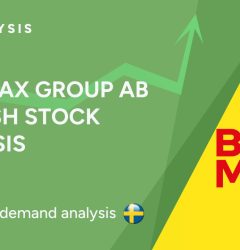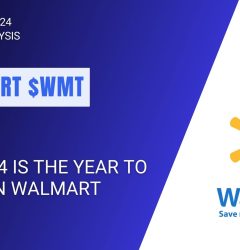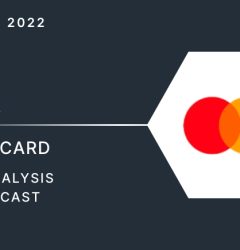04 Mar
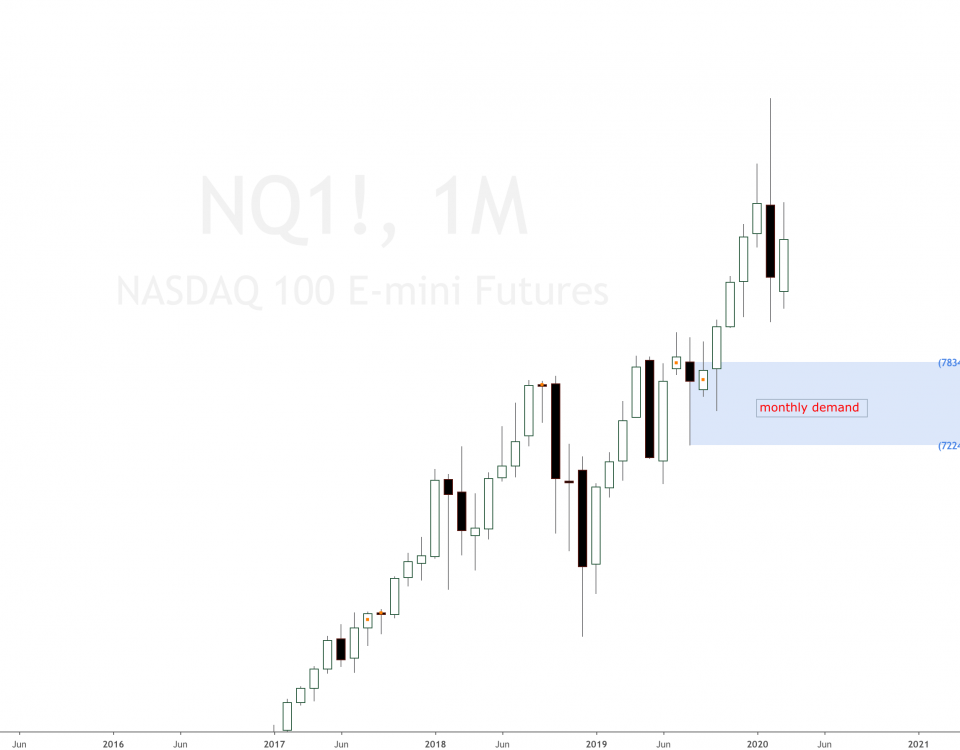
It has been an ugly week for the American indexes; some analysts suggest it may get uglier soon. Could the US Market be in a crash? We may be at a juncture that undoes nearly all of last year’s gains, but that’s how the market works. If you get greedy and try to hold your gains for ages, you will most likely give it all back to the market.
Crash of the US stock market 2020
A crash isn’t about percentage, it’s about time. The crash will happen. When will it happen? Nobody knows. As far as supply and demand is concerned, most indexes are still in a clear uptrend breaking all time highs. The monthly timeframe is still uptrending and creating new demand levels. So as long as we see something completely new, there is nothing like a crash happening, it’s just how the market works. After a very strong bullish move, corrections have happened, as simple as that. Where is the price most likely going to correct or retrace to? That’s an easy question, to strong imbalances on the bigger timeframes.
US market crash history
The word “crash” is scary and conveys a lot of emotion. Emotions drive human beings, moreover if they have to do with money. Professional investors are aware of that; if they need buyers or sellers to fill their orders, they are ready to scare you to death and use you as bait.
Arthur Schopenhauer said that…
All truth passes through three stages. First, it is ridiculed. Second, it is violently opposed. Third, it is accepted as being self-evident.
This has undoubtedly been a very painful week for equity investors, reminding us all that risk happens fast. However, there is no truth about the US market crash regarding supply and demand analysis, so there is no place to be ridiculed or opposed. It’s not self-evident that the crash is happening, just a bigger correction for now.
Don’t let anyone score you! Use the grey matter available in your brain and judge by yourself. Please stay away from online magazines and financial services telling you what to do because most of them don’t agree with each other, not even what is expected for earnings for a specific stock or the Fed’s interest rate change.
US market crash today
To many, this increasingly looks like we are in a crash. First, we need to define what a crash is, though. A crash isn’t about the percentage (20%, as often cited in the media). Instead, it’s about time and whether bigger timeframe demand imbalances are being respected or eliminated.
SP 500 index US market chart analysis
Take a look at S&P 500 e-mini futures monthly timeframe below. There is a clear monthly demand in control in a clear uptrend. A crash? Where is it? I can’t see it. As long as monthly is still uptrending and demand is in control, there is no crash. And even if it was eliminated, it would just be what it happens after stronger corrections.
By doing a more detailed analysis of this imbalance and impulse together with other US indexes, it’s most likely that the monthly demand level will be eliminated any time soon. A multiple timeframe analysis needs to be done in order to place a trade, this is just a monthly timeframe analysis. You need to know when to place a trade and when not to based on multiple timeframe analyses.
If this monthly imbalance is eliminated, we could see a much bigger bearish correction in 2020. We could step into a medium-term bearish bias on US indexes and many US stocks.

Nasdaq index US market chart analysis
Let’s have a look at another of the US indexes, Nasdaq 100 e-mini futures. There is a scenario very similar to the one on S&P500 e-mini futures. Nasdaq futures is in a clear uptrend creating new monthly demand level, the last one around at 7.834. Crash? There is no sign of any crash in the Nasdaq market, it’s just a correction right now. But this monthly imbalance is under attack and could be eliminated any 5km3 soon. A bearish correction is expected.
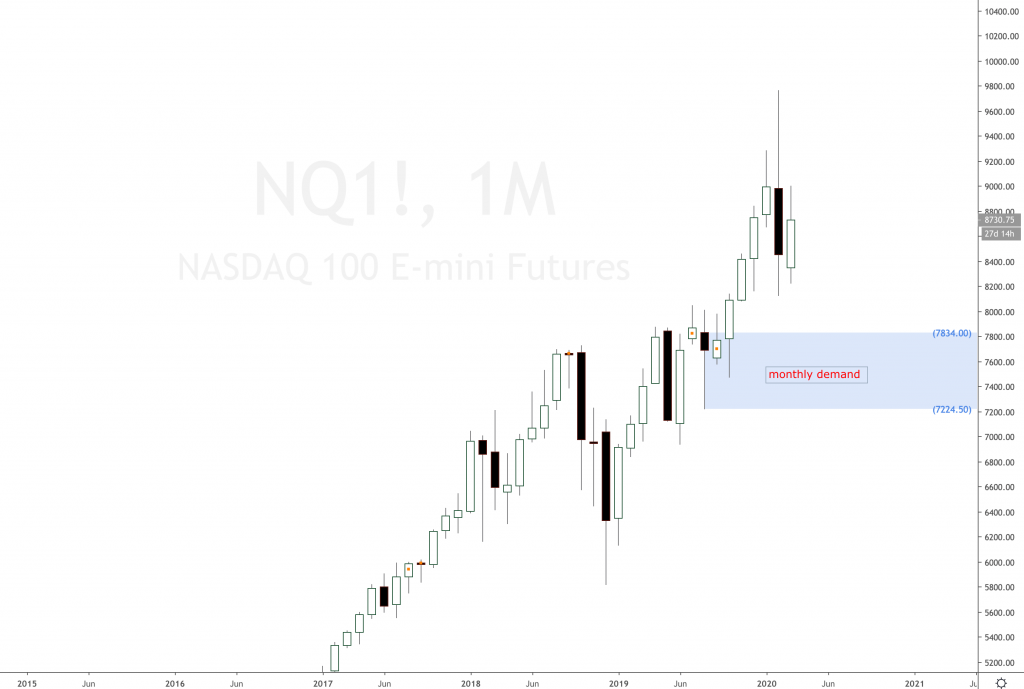
Dow Jones US market chart analysis
What about Dow Jones e-mini futures? Is there a crash? Nope, monthly uptrending, weak monthly demand around 26.000 still holding. Of of the three main US indexes, the Dow Jones is the weakest one, but we can’t talk about a crash. Monthly demand is under attack, it’s a very weak imbalance. A much bigger bearish correction is expected to affect many US stocks.
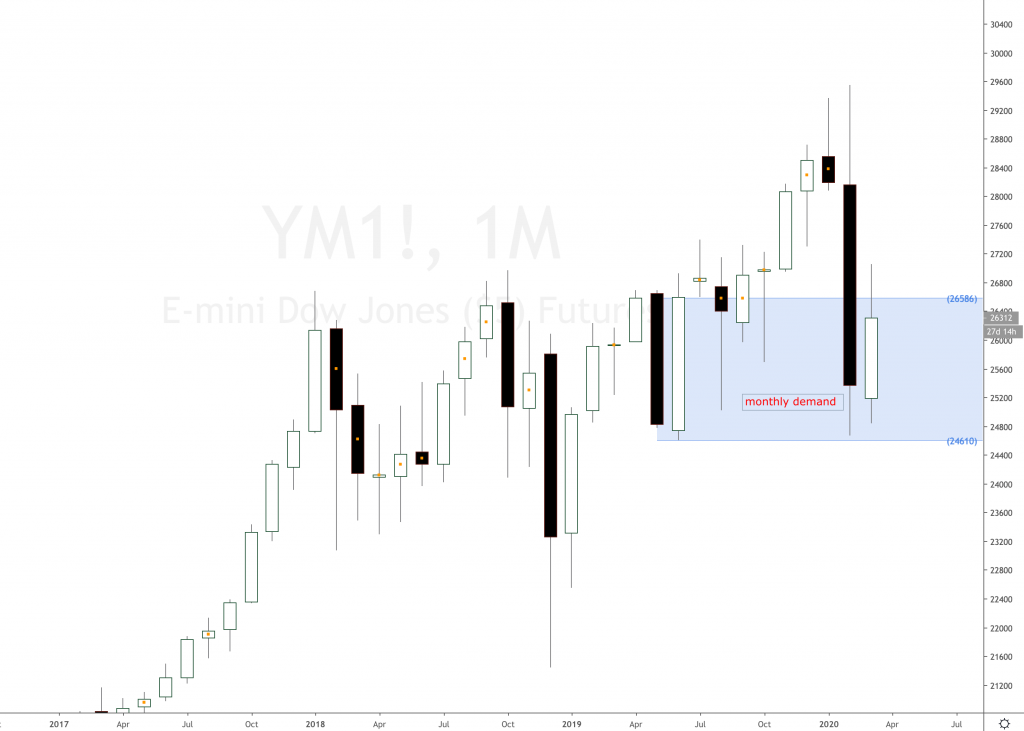
Russell 2000 index US market chart analysis
What about the Russell 2000 index? This American index is the weakest of all four. A strong monthly supply imbalance took control around the 1.696 price area a couple of months ago and it’s been dropping strongly ever since. But does that mean there is a crash? Come on! It’s just supply and demand playing out, bigger timeframe imbalances taking control and changing the lower timeframe dynamics.
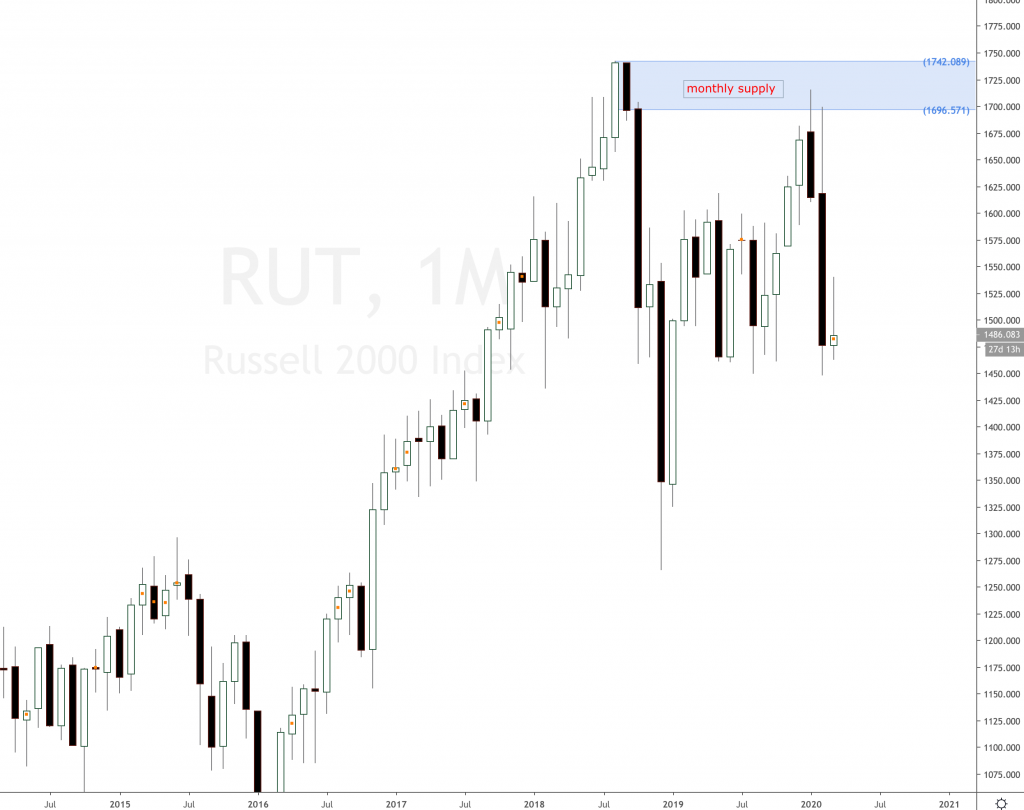
Really could we have a crash in the US market?
Take a deep breath and think about it. After going over the monthly timeframe analysis for all four American indexes. It’s still uptrending. However, these imbalances are under attack and we expect them to be eliminated for several reasons explained in a more detailed analysis made in the trading community.
US market crash today is possible.
Looking for a helping hand in the market? Members of Set and Forget supply and demand trading community get exclusive ideas and guidance to navigate any climate.
Who I am?

I’m Alfonso Moreno, a full-time trader, expert technical analyst and founder of the Set and Forget supply and demand online trading academy back in October 2013.
I have been trading the financial markets using exclusively supply and demand imbalances, a proprietary strategy developed by myself over the years which helps locate any market turning points where professional and institutional traders are planning their trades.
